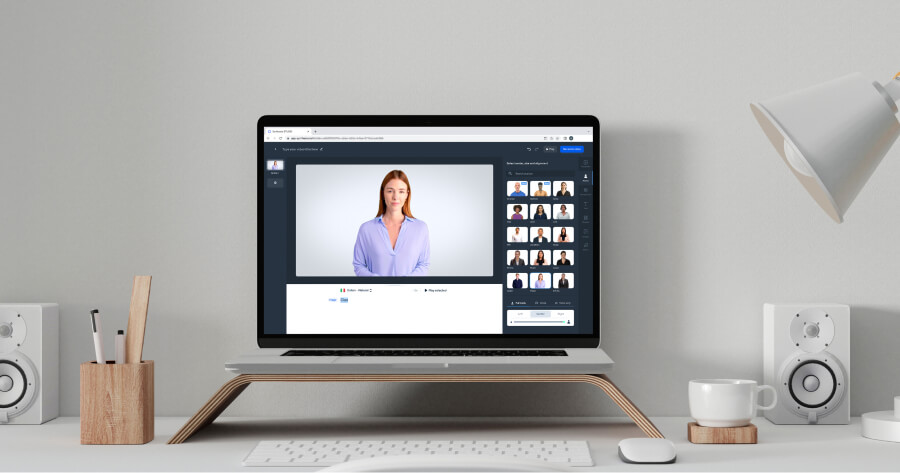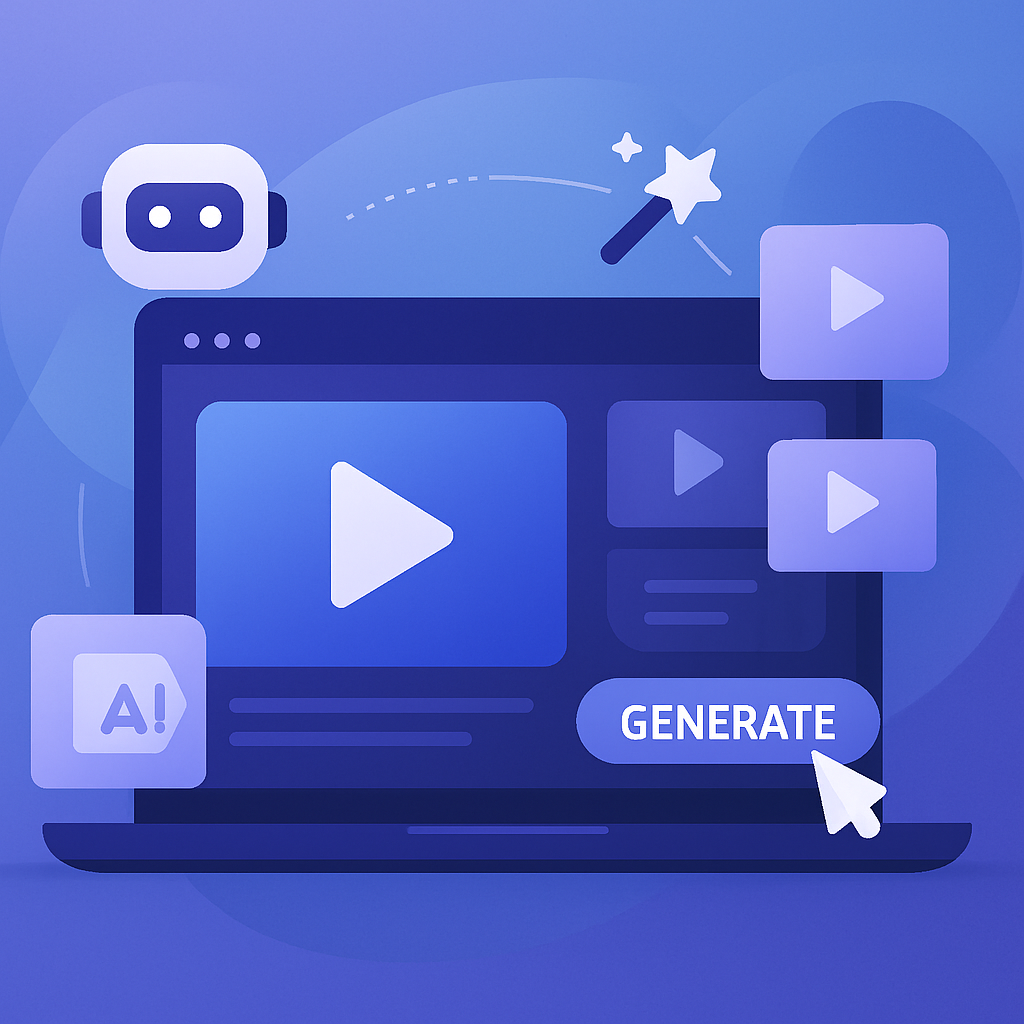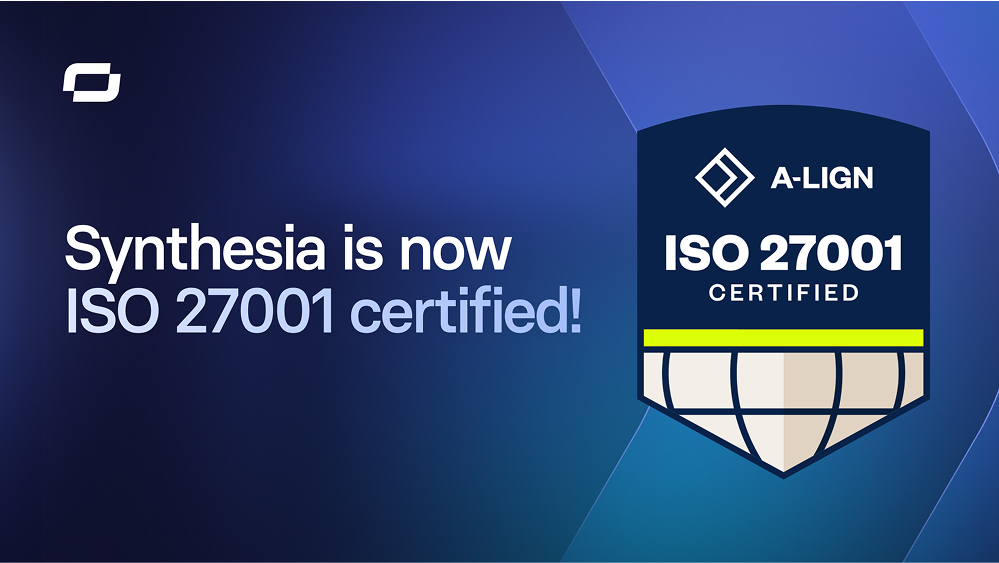
Create AI videos with 230+ avatars in 140+ languages.
You’ve heard of remote work. Now, it’s time to learn about remote video production.
As a creator, you know making your own videos can be a big job. You must source a location, lights, cameras, crew, actors, and voiceover artists. And that's all before you even begin editing.
And if there's any long-distance travel involved, your costs just skyrocketed.
Remote video production is an alternative that will:
- Allow you to collaborate with teams across multiple locations
- Cut costs related to travel
- Get filming faster and more efficiently
Read on to discover the steps of remote video production and how to use it to create engaging content.
What is remote video production?
Remote production is content made by remote collaboration, with the producer and/or the editors at a different location than the actors. It’s a great option if you want to film professional videos with high production value without bringing everyone to the physical location.
You can work with a remote production service provider or create your own production setup.
The remote video production process explained
Step 1: Split your production planning into on-site and off-site (remote) crew.
Step 2: Send every team member the relevant remote production kit — for on-site, typically a camera, microphone, lighting, tripod, and transmitter hardware and software. The off-site crew will need access to the transmitter.
Step 3: Monitor filming live. If you're broadcasting in-person events, or live-streaming virtual events, the producer will overlay text, ads, or animations in real-time.
Step 4: Once filming is completed, your video content will be sent to post-production.
When to use remote video production?
Remote video production is a relatively new concept, but it’s quickly becoming convenient for international teams to collaborate and easily film on-site. It works when you want to:
- Broadcast live in-person events.
- Livestream virtual events and conferences.
- Film training videos on site.
- Film remote interviews.
The process involves using hardware and software to:
Film on set with crew gear → Transfer that data to the producers. → Turn the footage into a finished product.
A popular alternative or addition to remote production is AI video production. Here are the benefits of AI-powered remote video production:
- Accessibility to global talent: More opportunities arise when you’re not limited to talent in your proximity. Working with an actor from France and a video editor from Japan is totally doable.
- Cost-effectiveness: You can minimize overhead costs without paying for travel, location rental, lights, and cameras. Berlitz, a global leader in language education, used Synthesia to reduce their video production cost by a factor of 3.
- Time efficiency: As teams work asynchronously, you’ve got fewer scheduling conflicts, less downtime, and faster turnaround times. Network Rail, another enterprise company, makes videos 95% faster.
- Improved flexibility: The remote model is more fluid, whether for adjusting to different time zones or making last-minute changes to a project. BSH created +30,000 videos for employees in different formats and languages.
- Scalability: You can scale without making big changes in infrastructure or personnel. Fiery trained 50,000 learners in 8 different languages.
Popular types of remote video production
Depending on project specifics and where your teams are located, there are two main options to pick from:
1. Traditional film environment paired with remote producers
This remote production option places the video producer at a different venue than the actual filming setting. Everyone else is on-site, in-person — film crew, actors, and other standard contributors.
The approach is especially effective for live conferences, talk shows, and even on-site interviews with employees intended for training.
You record the event and simultaneously broadcast it to your producer so they can monitor it live but from a different area.
2. Remote video from multiple sources
This option places everyone at different venues, including the people on camera. In other words, you're dealing with video feeds from multiple sources.
The approach is especially effective for live-streamed virtual events or talk shows. Think big events shared through platforms like Zoom, Google Meet, and Microsoft Teams or professional live streaming services like YouTube Live, Facebook Live, Twitch, and OBS Studio.
In this remote participants scenario, your producer monitors the event and can overlay logos, visual highlights, animations, or other brand elements during the live stream.
Key challenges of remote production
The most common challenges are technical — poor internet connection, hardware issues, or software glitches. To reduce their occurrence, use reliable equipment and tools with advanced features — Epiphan and Riverside are two of the most robust providers specializing in seamless remote video production.
1. Techincal challenges
Before diving into the shoot, always run tests on your video recording and transmission to ensure everything is in order. But as we all know, even the best-laid plans can face unforeseen challenges. This is why having a backup plan for video recording is crucial, especially when contending with potential remote access issues. Moreover, having a designated tech-savvy individual on standby, equipped to troubleshoot any technical glitches, can make all the difference in ensuring smooth operations.
2. Communication challenges
One of the inherent challenges in remote video production is effective communication. To navigate this, it's essential to keep in touch with the production team regularly. This means adopting clear language that's free from jargon and overly technical terms. Additionally, embracing video conferencing tools can significantly aid in real-time collaboration, ensuring everyone is aligned and in sync.
3. Time zone differences
Another hurdle to consider is the time zone disparity. It's crucial to remain adaptable, striving to find collaboration times that cater to everyone involved. Leveraging project management tools can be invaluable here, allowing teams to seamlessly track progress and adhere to deadlines, regardless of where they are based.
4. Lack of face-to-face interaction
Without conventional face-to-face interactions, building and maintaining relationships becomes a tad more challenging. It's vital to cultivate these relationships through consistent communication. Tools such as Slack or Google Hangouts can be instrumental in this regard. They not only foster a sense of community but also pave the way for timely feedback and discussions.
5. Security and privacy
In the digital realm, security and privacy are paramount. It's non-negotiable to adopt secure video conferencing platforms to safeguard sensitive information. Furthermore, when it comes to video files, encryption is key. Ensure that these encrypted files are shared selectively, only with individuals who are authorized to view or edit them.
Remote production alternative: Skip filming altogether with AI avatars
An AI avatar is a digital representation of a real professional actor. You can use them to create professional-quality videos using a tool like Synthesia.
These highly realistic AI avatars have natural facial expressions, micro gestures, head movements, and natural-sounding speech. And they’re only a click away. All you need to do is select your video presenter from a bank of 140+ avatars. Or turn someone at your company into an AI avatar to deliver the training.
Check out how Synthesia lets you create a video in 3 minutes using realistic AI avatars rather than filming a person on set.
This video creation method with AI avatars is:
✔️Easy to use: You produce the video in a web browser. Stakeholders can access it from anywhere, suggesting edits or implementing changes.
✔️Cost effective: Synthesia is a subscription-based service starting at $30/month and gives you access to 60+ templates and 120+ languages to narrate your video with one click.
✔️Scalable: You can duplicate any video and change its language, presenter, or content to customize it with the viewer’s name and role at the company.
Other ways you can use AI in remote video production
Pre-Production planning 📝
You can quickly simplify pre-production with AI. Scriptwriting and storyboarding are two of the most common AI uses in pre-production.
- ChatGPT can quickly write a full script and describe your storyboard.
- AI video makers ask you a few questions about the specifics of your video and develop a full storyboard broken down scene by scene using a video template.
Automated filming 📽️
If you’re not generating an entire video with AI, use it to control cameras. AI-driven cameras can adjust shooting angles, zoom, or pan based on movement. They can also automatically check ambient conditions, adjust lighting and microphone sensitivity, and even filter real-time background noise, ensuring a higher video quality production.
Post-Production editing 🎞️
Skip hours of going through tons of footage and let the AI algorithms quickly analyze it and pick out the key moments. Or make your video more accessible and easy to scale with automatic transcriptions and subtitles in multiple languages.
Create your first remote video today
Remote production is an excellent way to get the high-quality video content you need without doing the whole filming and editing yourself. But what if you could get those videos without doing any filming?
Try Synthesia's free AI video maker to experiment with creating professional videos in minutes, using just text in your web browser.
About the author
Learning Strategist & Speaker
Elly Henriksen
Elly Henriksen is a accomplished instructional designer exploring the impact of AI-generated content on learning design. With eight years of experience across both professional and higher education institutions, notably The University of Washington, Elly provides an insightful perspective on the transformative power of synthetic media for learners and instructional designer. Her versatile roles, from course facilitator to eLearning author and LMS administrator, give her a unique vantage point on the evolving trends in instructional design and how AI impacts the learning landscape. Explore Elly's insights and her pursuit of leveraging AI to redefine the future of the learning world.













